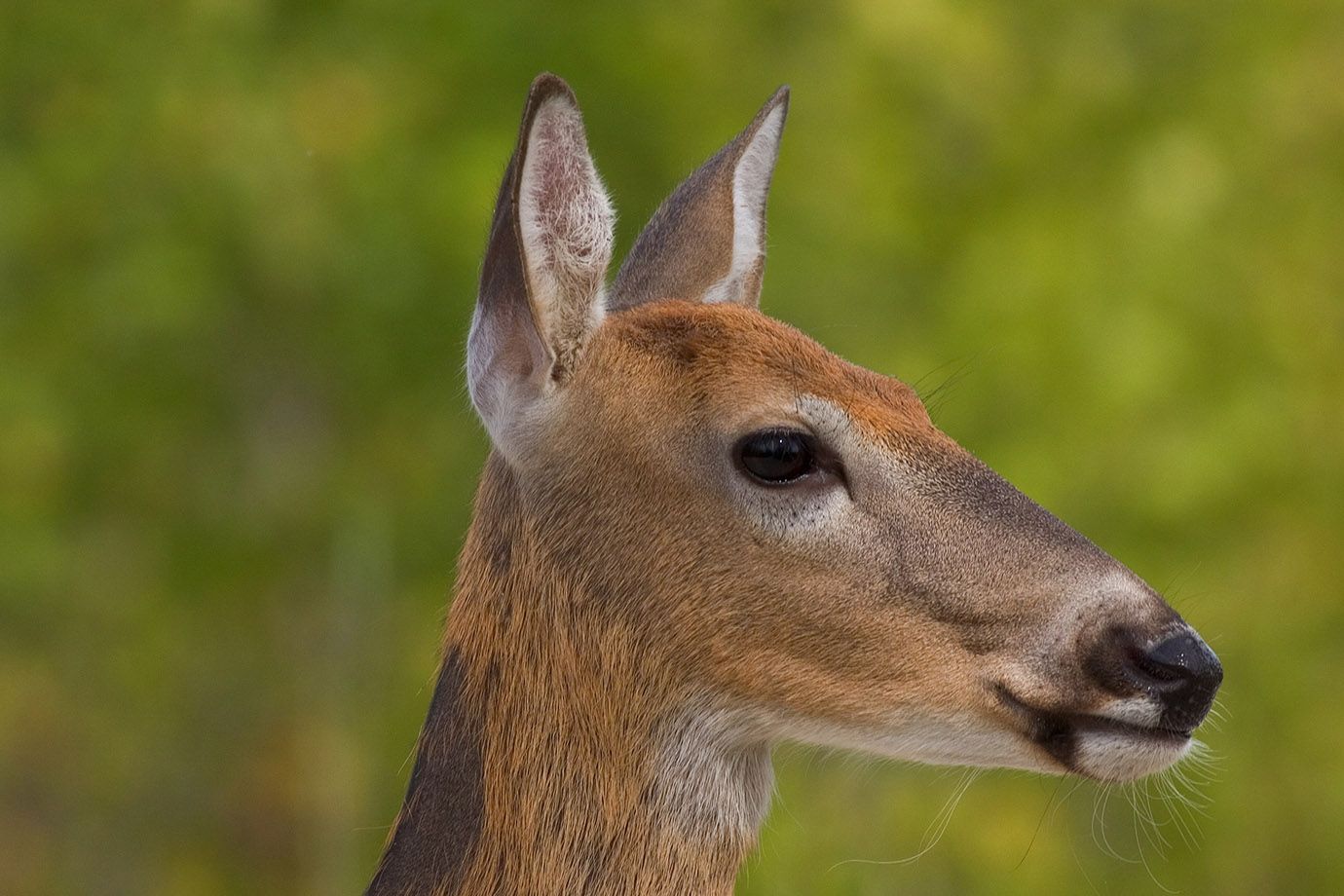
Deer
Deer (singular and plural) are the ruminant mammals forming the family Cervidae. Species in the Cervidae family include white-tailed deer, elk, moose, red deer, reindeer, fallow deer, roe deer and chital. Male deer of all species (except the Chinese water deer) and female reindeer grow and shed new antlers each year. The musk deer of Asia and water chevrotain (or mouse deer) of tropical African and Asian forests are not usually regarded as true deer and form their own families, Moschidae and Tragulidae, respectively.
Deer live in a variety of biomes ranging from tundra to the tropical rainforest. While often associated with forests, many deer are ecotone species that live in transitional areas between forests and thickets (for cover) and prairie and savanna (open space). The majority of large deer species inhabit temperate mixed deciduous forest, mountain mixed coniferous forest, tropical seasonal/dry forest, and savanna habitats around the world. Clearing open areas within forests to some extent may actually benefit deer populations by exposing the understory and allowing the types of grasses, weeds, and herbs to grow that deer like to eat. Additionally, access to adjacent croplands may also benefit deer. However, adequate forest or brush cover must still be provided for populations to grow and thrive.
Source: en.wikipedia.org/wiki/Deer - 03.11.2011
Deer Doe
Besides the Males, which impresse with their antlers and the stirringly appearing young animals, the doe attracts little attention - though the one would not exist without the other.









